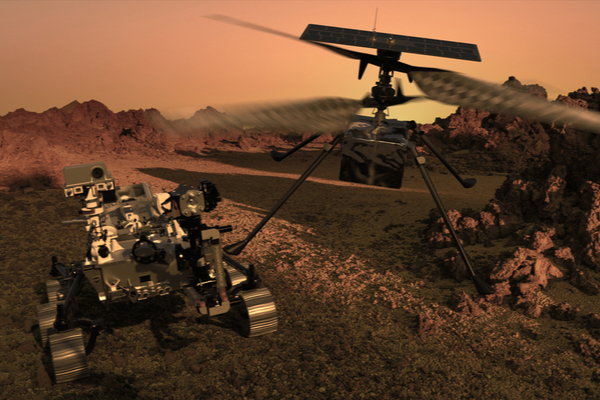NASA confirmed on Monday the historic first flight of a powered aircraft on another planet, the Mars helicopter Ingenuity. Engineers cheered and clapped during a live broadcast as data confirming the flight arrived from the distant planet to the space agency’s Jet Propulsion Laboratory in Pasadena, Calif.
The helicopter performed “spinup, takeoff, climb, hover, landing and spin down,” said Håvard Grip, Ingenuity pilot. The time of flight was about 3:30 a.m. EDT. “We can now say that we have performed a successful flight on another planet, said MiMi Aung, project manager for the helicopter. NASA worked through a glitch with a timer on Ingenuity that delayed a previous flight attempt on April 9, according to Aung.
Images from the aircraft itself showed the helicopter’s shadow on the surface during flight, while additional footage from the Perseverance rover’s camera showed the aircraft hovering. The four-pound, solar-powered helicopter flew 10 feet above the surface of Jezero Crater for about 30 seconds, just to demonstrate flight capability in the thin Martian air. Ingenuity’s dual rotors are 4 feet long and made of lightweight carbon fiber composite. To cope with the thin air on Mars, they rotate at 2,500 revolutions per minute, which compares to helicopters on Earth that function at 400 to 500 revolutions per minute.
NASA expects to release more data and images, including video of the flight shot by the Perseverance rover, at 1 p.m. EDT. The rover and helicopter landed on Mars on Feb. 18, and the rover released the helicopter from its underside on April 4. NASA has planned only 30 days of experiment flight with Ingenuity, an $80 million experimental technology demonstration.
Ingenuity is completely dependent on Perseverance for communications with Earth. NASA plans to abandon the helicopter to allow the rover to continue its primary mission — drilling rock samples that could contain signs of past life on Mars. NASA now plans to fly higher and farther, pushing the limits of Ingenuity’s design, which ultimately may lead to a crash landing. If those experiments are a success, NASA officials have said they expect to send more aircraft to Mars on future missions.
—
Photo Credit: Mike Mareen / Shutterstock.com
